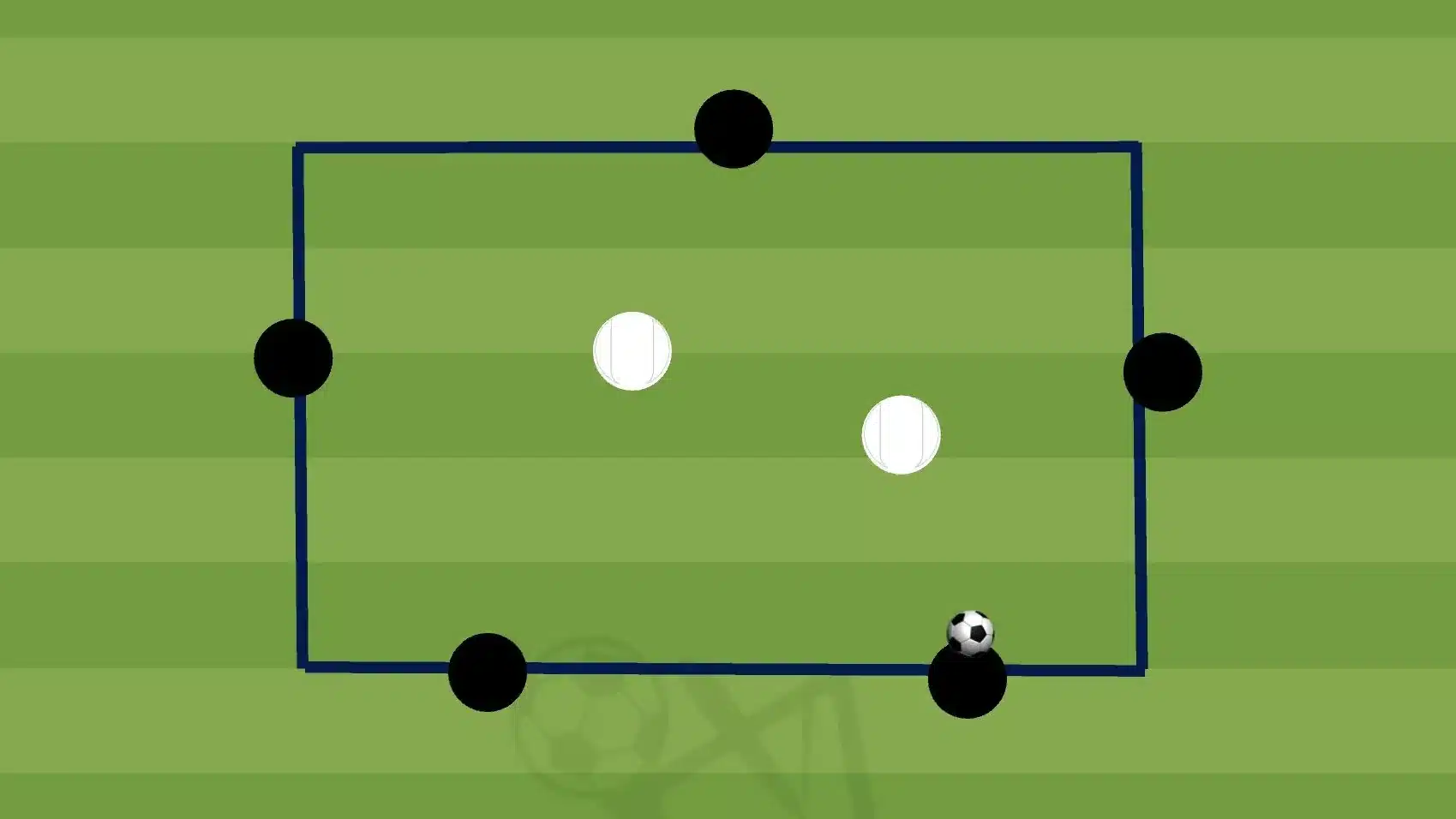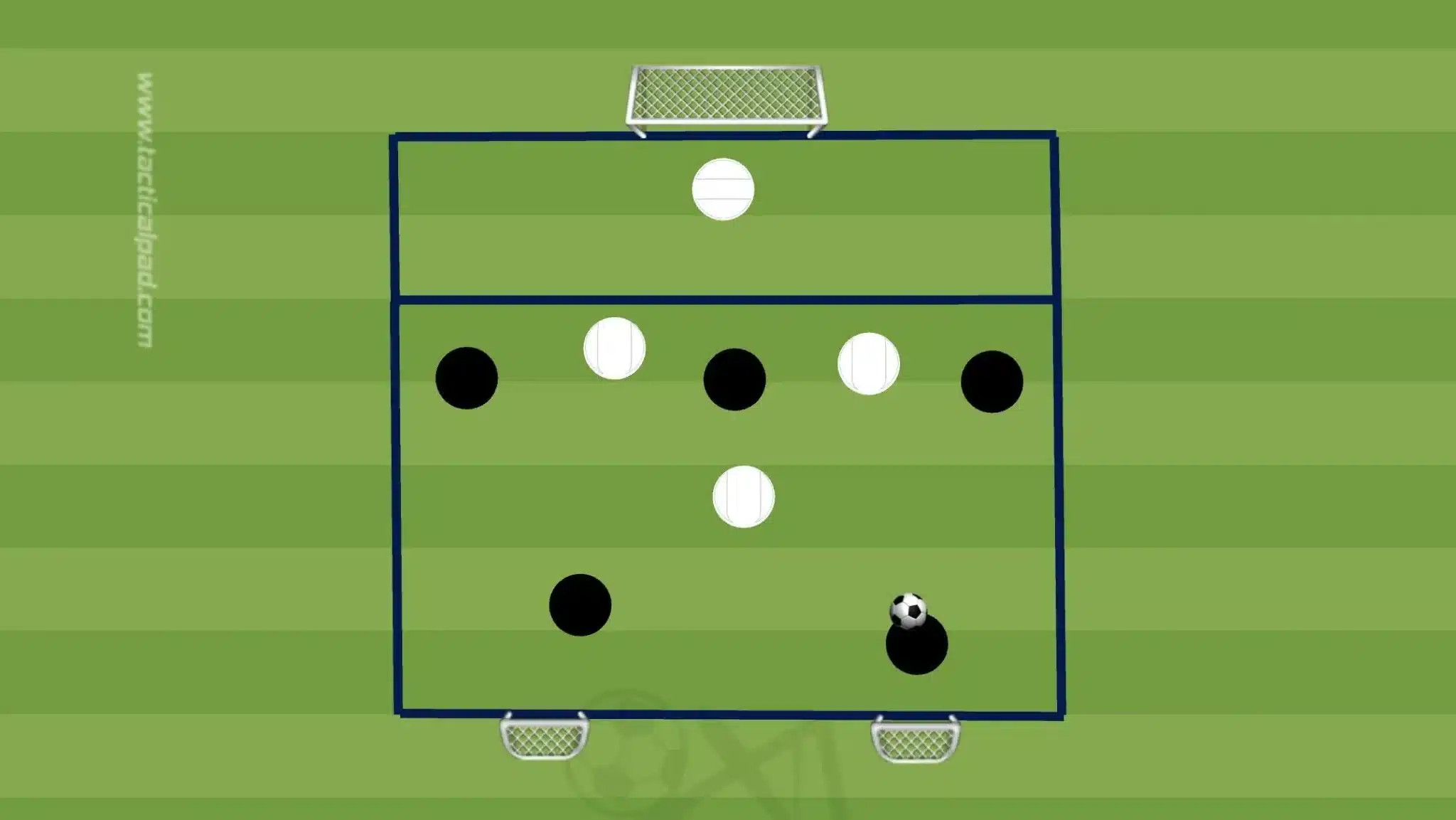In modern football, spatial awareness is a crucial skill that allows players to anticipate movements, create space, and make intelligent decisions. Teams that master positional play use structured movement and spacing to maintain possession, progress the ball, and control the game.
This article outlines positional play drills that help players develop better spatial awareness by improving scanning, movement off the ball, and coordination with teammates.
Why Is Spatial Awareness Important in Positional Play?
Spatial awareness refers to a player’s ability to read the game, understand their positioning relative to teammates and opponents, and make quick decisions based on available space. Teams like Manchester City, Barcelona, and Bayern Munich build their playing philosophy around these principles, ensuring that players always operate within an organized structure.
Players with strong spatial awareness can:
- Find and create passing lanes in tight areas
- Exploit gaps in the opposition’s defensive shape
- Rotate positions fluidly while maintaining team structure
- Recognize when to move into space and when to stay positioned
By incorporating specific training drills, coaches can help players develop these abilities in a structured and game-realistic way.
Key Drills to Improve Spatial Awareness
1. Rondos with Positional Constraints
Objective: Improve decision-making, first-touch quality, and awareness of space under pressure.
Setup:
- Organize a 5v2 rondo with five attacking players forming a circle or square and two defenders pressing in the middle.
- Players are assigned specific positional roles, such as midfielders or defenders, to simulate real-game conditions.
- The area is divided into small zones to ensure players maintain structured movement rather than bunching together.
How It Works:
- The attackers must circulate the ball quickly while remaining within their designated zones.
- Defenders attempt to win possession through pressing and intercepting passes.
- If a defender wins the ball, they switch places with the attacking player who lost possession.

Coaching Points:
- Players should constantly scan before receiving to be aware of pressing defenders and passing options.
- Encourage quick, precise passes to shift the defenders and create open passing lanes.
- Players should adjust their positioning to provide optimal support angles for teammates.
Progression:
- Restrict touches to force quicker decision-making (e.g., two-touch maximum).
- Add a player in the middle who plays for the attacking team, creating a 6v2 overload.
2. Positional Possession Game (7v4 or 6v3)
Objective: Train players to maintain structured team shape while circulating possession against defensive pressure.
Setup:
- Divide a small-sided pitch into zones to encourage positional discipline.
- Organize a 7v4 or 6v3 scenario where the attacking team attempts to keep possession within these zones.
- Defenders press aggressively to win the ball and transition when possible.
How It Works:
- The attacking team must maintain shape while circulating possession, using movement and passing combinations to bypass defensive pressure.
- If the defenders win the ball, they attempt to keep possession in the middle zone against the two attacking midfielders.
- Players must stay within their designated zones, ensuring proper spacing rather than clustering around the ball.

Coaching Points:
- Players should constantly adjust their positioning to remain available for passes.
- Encourage third-man combinations to create passing options beyond the immediate pressure.
- Use body positioning to shield the ball and make play predictable for teammates.
Progression:
- Introduce positional rotations where players can switch zones dynamically based on ball movement.
- Limit time on the ball to simulate real-game tempo and force quicker decision-making.
3. Overload & Underload Drill
Objective: Improve a player’s ability to recognize numerical superiority situations and exploit space efficiently.
Setup:
- Create a 5v3 scenario in a designated playing area.
- The attacking team aims to circulate possession and progress play into an attacking zone by finding the free man.
- The defensive team works on compact pressing and blocking passing lanes. If they win the ball, they transition and try to score in two small goals.
How It Works:
- The attacking team must recognize and use the numerical advantage by moving the ball quickly.
- The defenders apply coordinated pressure, attempting to force mistakes and win possession.
- Once the attacking team completes a certain number of passes or breaks the defensive line, they move into an attacking zone.

Coaching Points:
- Players should scan frequently to identify the free player and adjust their positioning accordingly.
- Encourage diagonal passing to shift defenders and open up space.
- Attackers must support play by creating angles and maintaining proper distances.
Progression:
- Reduce the number of touches allowed to force quicker decision-making.
- Increase defensive intensity by adding an extra pressing player.
4. Positional Rotations in Build-Up Play
Objective: Train players to manipulate opposition defensive structures through coordinated movement and intelligent positioning.
Setup:
- Organize players into a back four and a midfield three, replicating a real-game build-up shape.
- Assign specific rotations for players, such as fullbacks inverting, midfielders dropping deeper, and wingers tucking inside.
- Use mannequins or pressing defenders to simulate opposition pressure.
How It Works:
- The build-up play starts with the goalkeeper or center-backs, who attempt to progress the ball into midfield while maintaining a structured shape.
- Players must rotate positions based on triggers (e.g., when the fullback pushes forward, a midfielder covers the vacated space).
- The goal is to maintain numerical superiority in key areas and bypass the first pressing line.

Coaching Points:
- Players must move in sync to maintain structure while creating passing options.
- Vertical and diagonal passes should be prioritized over lateral ball movement.
- Players should constantly scan and adjust their positioning based on the movement of teammates and opponents.
Progression:
- Introduce more aggressive opposition pressing to simulate game-like build-up scenarios.
- Add a transition phase where the team must react quickly to losing possession.
Final Thoughts
Building spatial awareness through positional play drills is essential for any team that aims to dominate possession and control games. These exercises develop a player’s ability to position themselves effectively, anticipate movements, and manipulate space efficiently.
Key Takeaways:
- Spatial awareness improves a player’s decision-making and positioning within a team structure.
- Rondos, positional possession games, and overload drills develop a player’s ability to recognize and use space effectively.
- Players must constantly scan, adjust positioning, and understand when to move into space or hold their position.
By implementing these drills into training sessions, coaches can help players develop the intelligence and awareness needed to excel in a structured positional play system.
